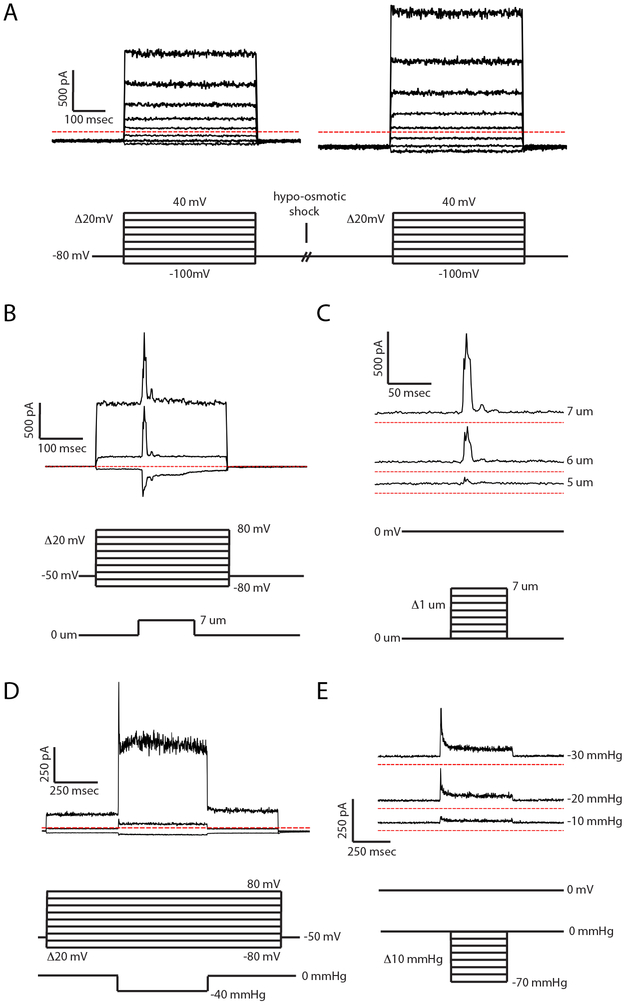Figure 1:
Protocols for electrical recording and mechanical stimulation for (A) cell swelling, (B,C) cell poking, and (D,E) patched membrane stretching (see Note 40). Example current recordings from human TRAAK expressed in cells are presented above the protocol diagrams and were obtained using the bath and pipette solutions described in the text. (A) Two voltage family protocols are separated by a solution exchange to induce hypo-osmotic swelling. Each voltage family consists of steps to test voltages ranging from −100 mV to +40 mV in 20 mV increments for 400 ms from a holding voltage of −80 mV. (B) A variable voltage, fixed probe depression family. The voltage family is analogous to (A) with the addition of a 150 ms probe depression of a set distance during each voltage step. Only currents from sweeps at −80 mV, 0 mV, and 80 mV are shown. (C) A fixed voltage, variable probe depression family. Sweeps are performed from a holding voltage of 0 mV. During each sweep, the probe is depressed for 100 ms. The depth of depression is increased by 1 μm in successive sweeps. Only currents from sweeps of 5, 6, and 7 μm depression are shown. (D) A variable voltage, fixed pressure application family. The voltage family is analogous to (A,C) with the addition of a 500 ms pressure pulse of a set value during each voltage step. (E) A fixed voltage, variable pressure family. Sweeps lasting one second each are performed from a holding voltage of 0 mV. During each sweep, pressure is applied for 250 ms. The amount of pressure applied is increased by 10 mmHg in successive sweeps. Only currents from −10, −20, and −30 mmHg are shown.

